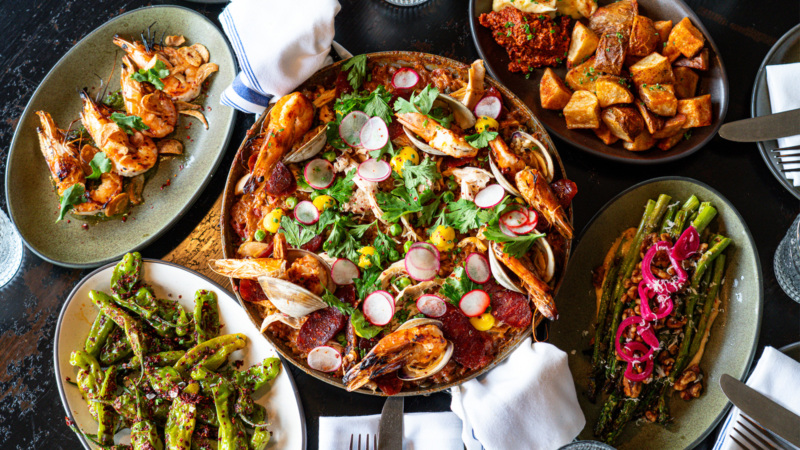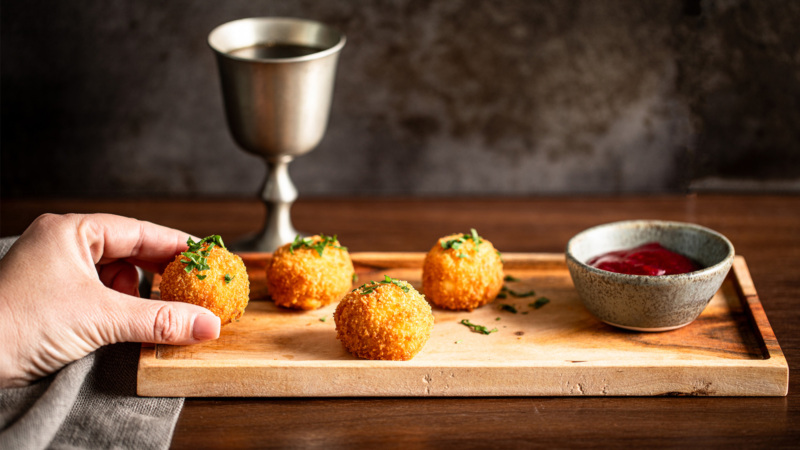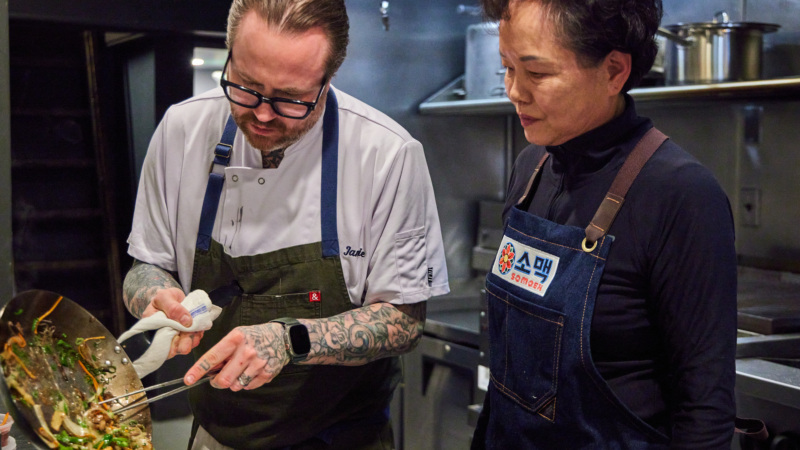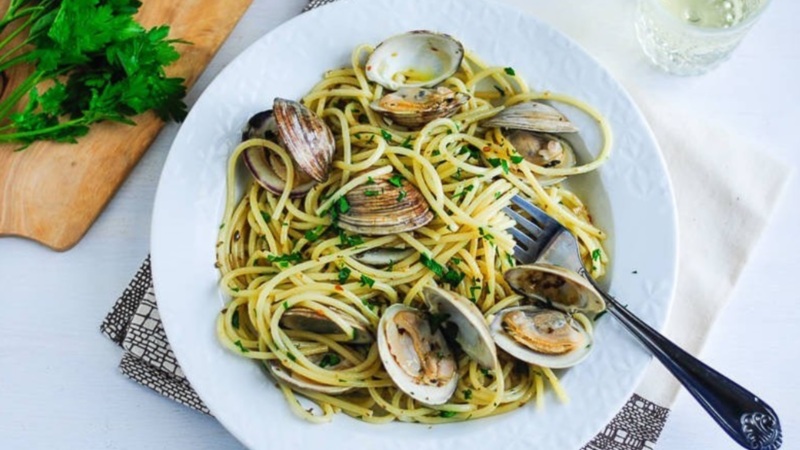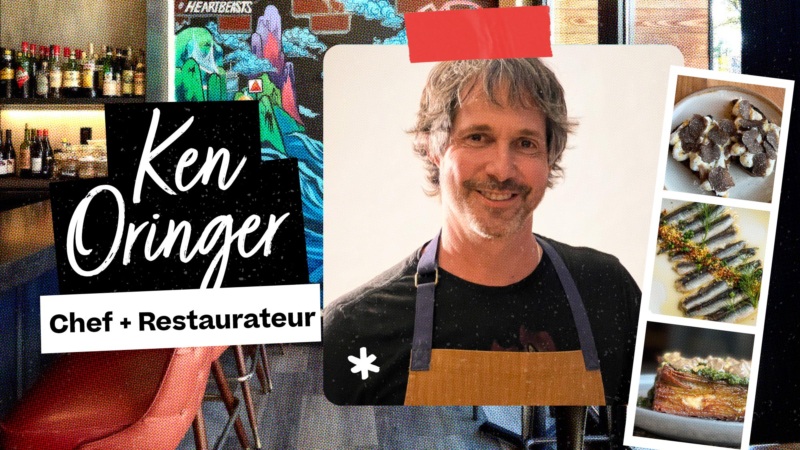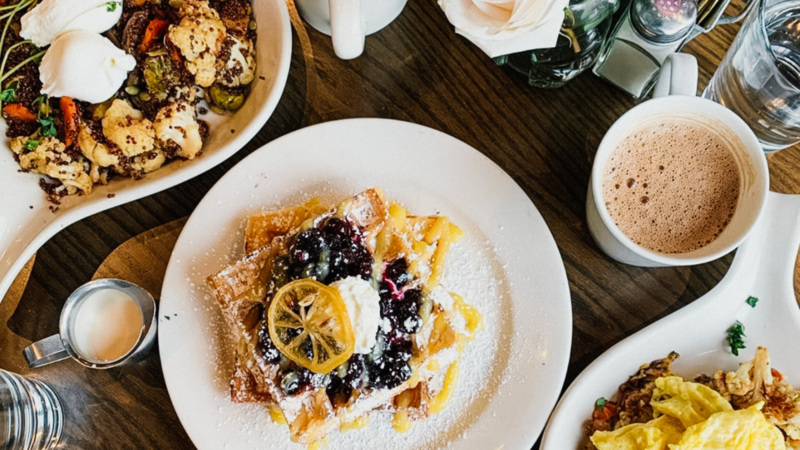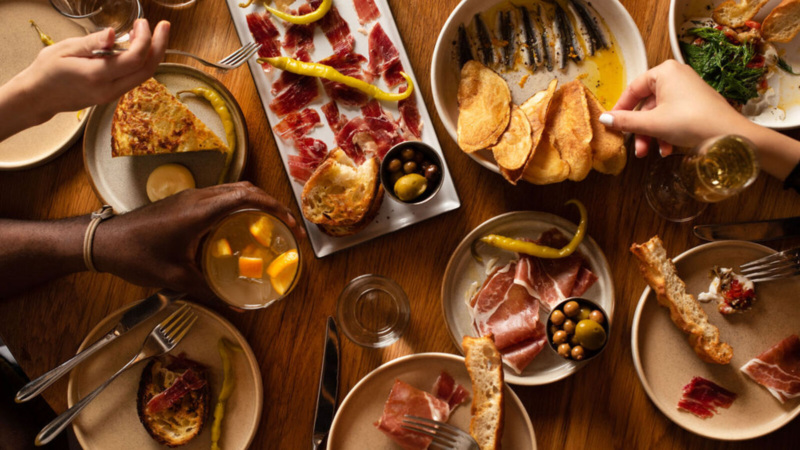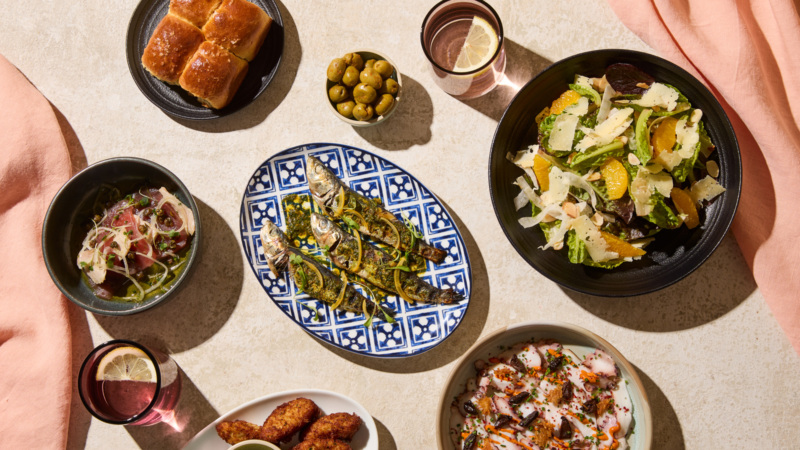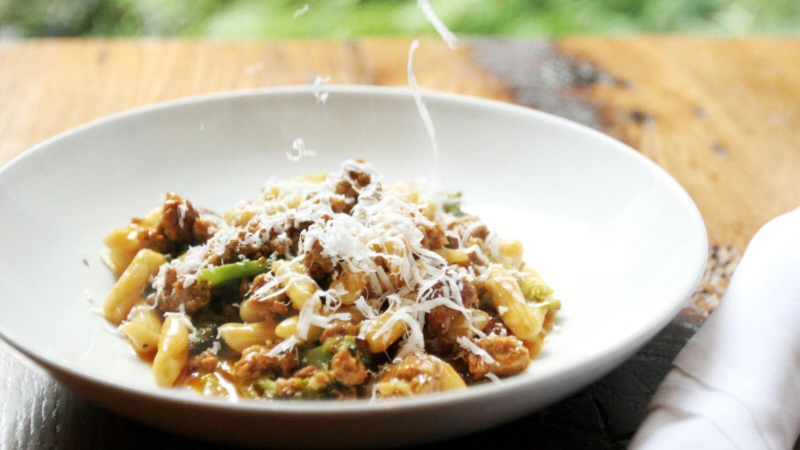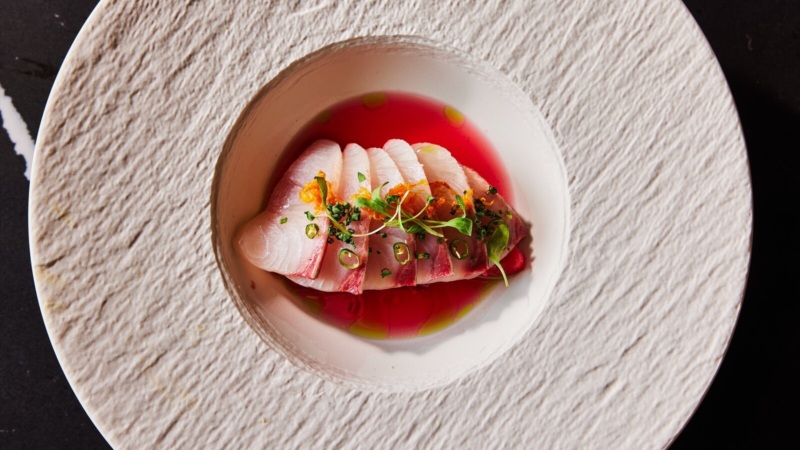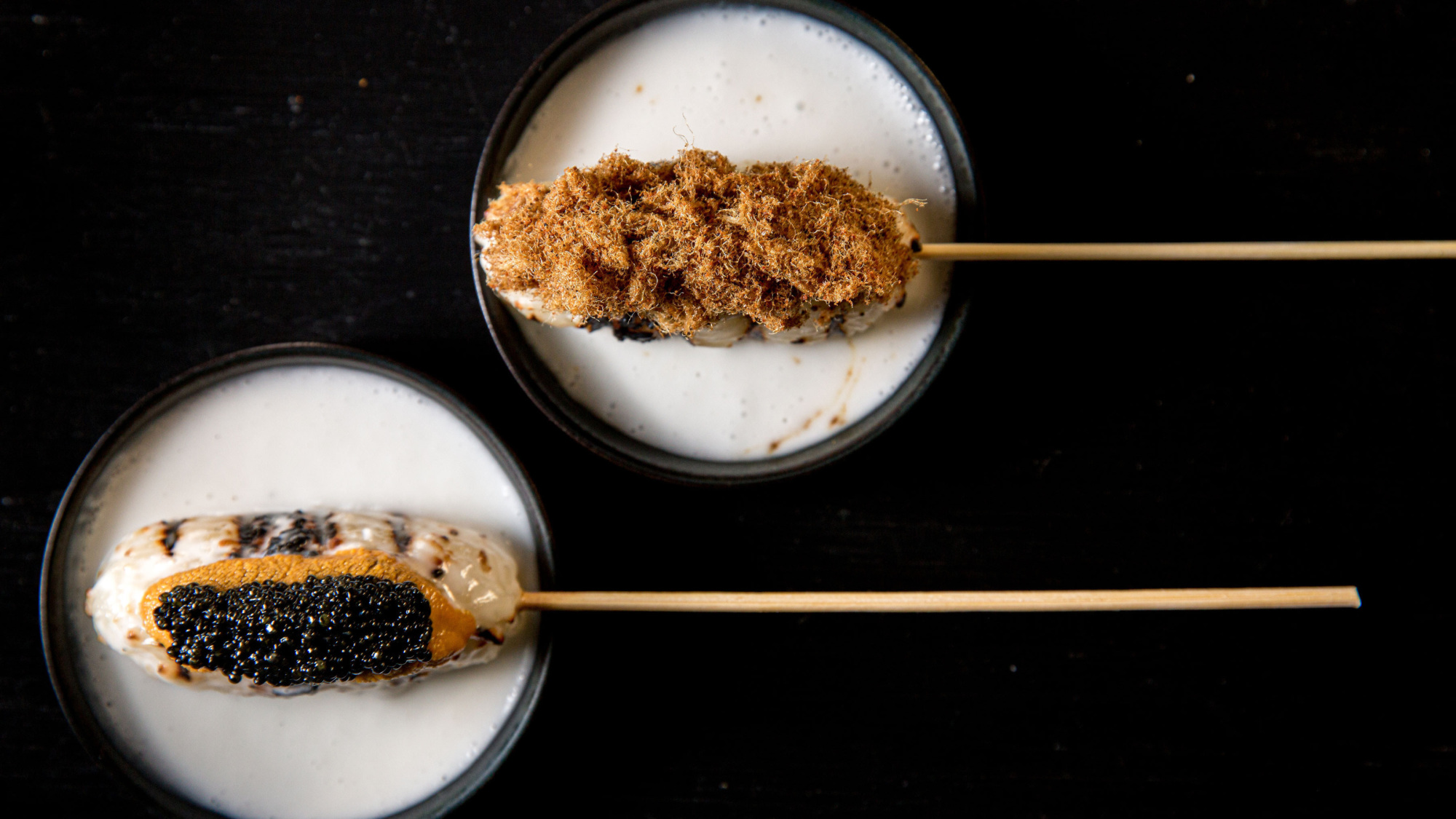
How Nightshade’s Rachel Miller Interprets Vietnamese Flavors, in Five Dishes
Plenty of cooks will tell you that a chef’s life is one of constant motion. That’s certainly true for Rachel Miller, chef-owner of Nightshade Noodle Bar, a French-Vietnamese seafood and noodle restaurant in downtown Lynn. But for this Southern transplant, the hustle involves much more than getting plates to tables. She’s always exploring — deriving energy from a vast palette of Vietnamese flavors, ingredients, and traditional preservation techniques.
“Even while we were building out Nightshade, I would have my laptop open, watching videos of Vietnamese street food tours,” Miller says. “I was painting the bar while watching, and being totally amazed by the way that food is served, what it looks like. … I still don’t have words for it. It’s incredible.”
You can feel Miller’s excitement as she recalls what it was like to be a 16-year-old cook, jumping on her bicycle and heading into Norfolk, Virginia, to experience pho for the first time with restaurant colleagues. She remained enamored of the cuisine after moving to Boston, where she worked as executive sous chef at the now-shuttered Bondir, Jason Bond’s gracious farm-to-table spot in Cambridge; and then chef de cuisine at Clio, Ken Oringer’s flagship fine-dining restaurant in Back Bay. Shortly after Clio closed at the end of 2015, Miller began operating Nightshade as a series of pop-ups throughout Boston and the North Shore, simultaneously working as a private chef and consultant. She remembers taking just four days off in the two years that followed.
Miller continued to research Vietnamese foodways and frequently collaborated with fellow cooks whose roots are in Southeast Asia. She opened Nightshade Noodle Bar in the fall of 2019. “Honestly, if I didn’t have such a focus on learning, and if it hadn’t become such a part of the kitchen culture at Nightshade, we wouldn’t be able to have such a diverse menu,” she explains. “Vietnamese cooking techniques have allowed us to produce food at a rate that we otherwise would not be able to — and to create unique things, too.”
Condensed from conversations that also included Nightshade’s beverage director, Miller shares how she creates five of her signature dishes — plus one flavorful drink option.
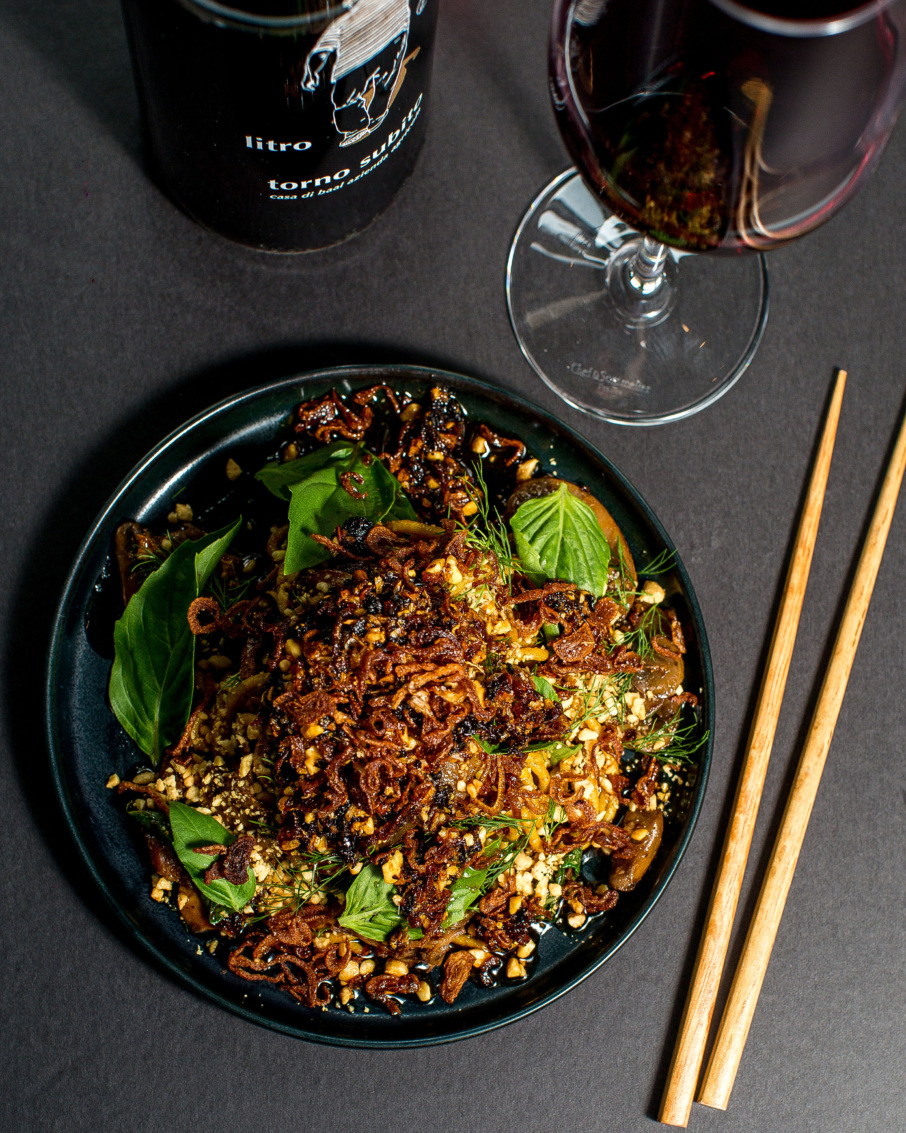
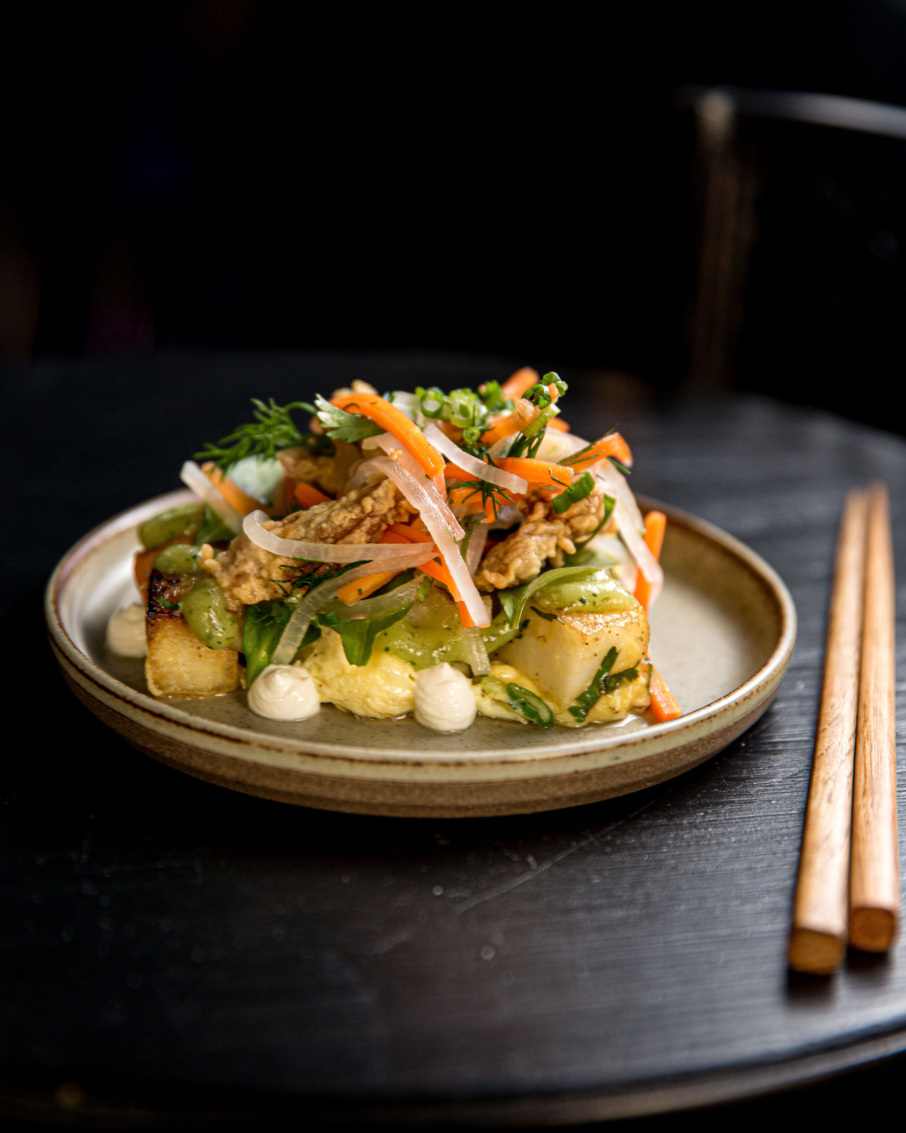
1. Homemade Egg Noodles
“This is our biggest-selling, hits-almost-every-table dish. I’ve been serving this regularly since Nightshade was a pop-up — even before the restaurant opened. Noodles are made in house every single morning. We use a stone-milled flour from One Mighty Mill across the street. The flour comes to us still warm from the mill. It’s amazing — and fresh. It’s got this super-nutty richness and super-firm texture — all of the micro-dents in the noodles give them that texture that hold the sauce really nicely.
The caramelized garlic sauce is based on a traditional Vietnamese ‘kho’ sauce, but we use mushroom [oyster-style] sauce just to have a little more flexibility for people with shellfish allergies. We process the garlic so that strong garlic funk doesn’t become too prominent. There are also peanuts in the sauce that we toast and grind. I come from the South, where boiled peanuts are pretty traditional. The texture of peanuts, once they sit in the sauce, end up a little softer; and there are also peanuts in the chili crisp, where they are a little crunchier. Then the final dish is also garnished with peanuts — to me, they present layers in the aromas too.
And that chili crisp — we get the main components from [Claire Cheney’s spice company] Curio. It would not be what it is without what she sources. Timut pepper is tingly — it has aspects of Sichuan peppercorn, but what’s special are its grapefruit notes. It has a lot of bitter citrus notes that are super-strong up front. And the black cardamom is really smoky.”
2. Grilled Coconut Sticky Rice Pops
“I went to Vietnam when we were doing the build-out at Nightshade, and all of the best meals I had were on the street. Grilled coconut sticky rice was something I just couldn’t get enough of — it was so comforting!
Stacy Gormley, our morning chef who does all of the sauce-making and noodle-making, loves making sticky rice. This is her thing — plus the sauce she makes with palm sugar, coconut milk, and Cambodian rice vinegar. I make brown butter solids [for one version of the dish] by browning butter, adding milk powder, and a tamarind spice mix. Then I massage it all together into pork floss, or ‘sung,’ the wooly pork condiment. It’s a good example of how Stacy and I cook together. She makes something, and I take it, add my spin, and put it out there. It’s our heartfelt teamwork situation.
Our Vietnamese clientele point out that the sticky rice gives them a feeling of nostalgia, and reminds them of family recipes — such a huge compliment! People really enjoy it, and seem really touched by it. Honestly, that’s the biggest driver for how I design the dishes. I’m just adding to the repertoire of dishes that make people feel nostalgic. For example, for a lot of people who grew up eating rice with butter — which was pretty common where I came from — the secret butter sauce that’s in all of the rice dishes is what makes our food so craveable. We’re mindful of what can be considered nostalgic to different members of our clientele from all over the country, even the world. That’s definitely the drive to cook at Nightshade.”
3. Kabocha Squash Bot Chien
“Essentially, ‘bot chien’ is fermented rice and tapioca flour. We pour [the batter] into a tray and steam it like a pâte à choux; then we cool it, and fry it up into some shapes. That’s the base of the dish. It was originally a brunch dish that we made like an open-faced omelet. I was frying the rice cakes and pouring over an omelet mix, serving that with tomatoes and chili crisp. But chicken eggs didn’t have enough grip. Duck eggs are thicker and richer — they better stand up to the fermented rice cake and the kabocha squash, which we braise in apple cider. And the duck tongues — I thought, ‘We need a crunchy, flashy factor in this dish.’ I learned how to work with duck tongues while working with Ken Oringer back in the day.
The green chile sauce is based on a traditional Vietnamese seafood dipping sauce made with green chiles, lime leaf, cilantro, and sweetened condensed milk — traditionally it’s made like a watery nuoc cham. We thickened it with tapioca starch because I wanted to make squiggles to serve on clam rolls. The sauce migrated over to this dish.”
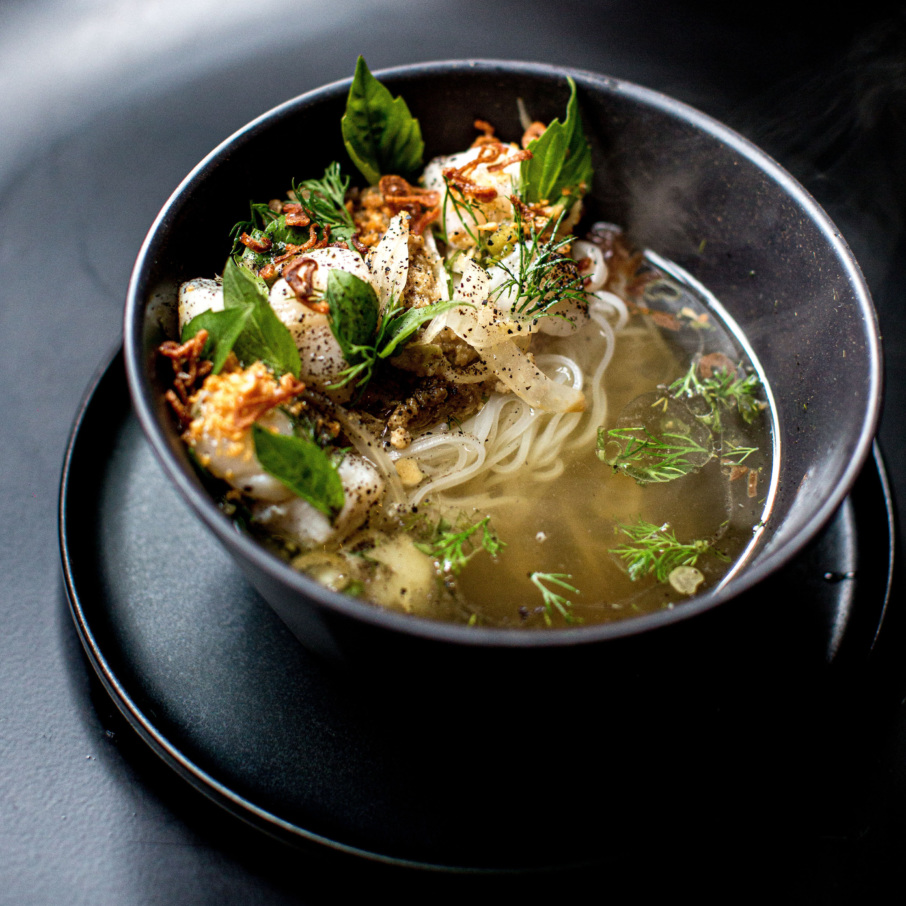
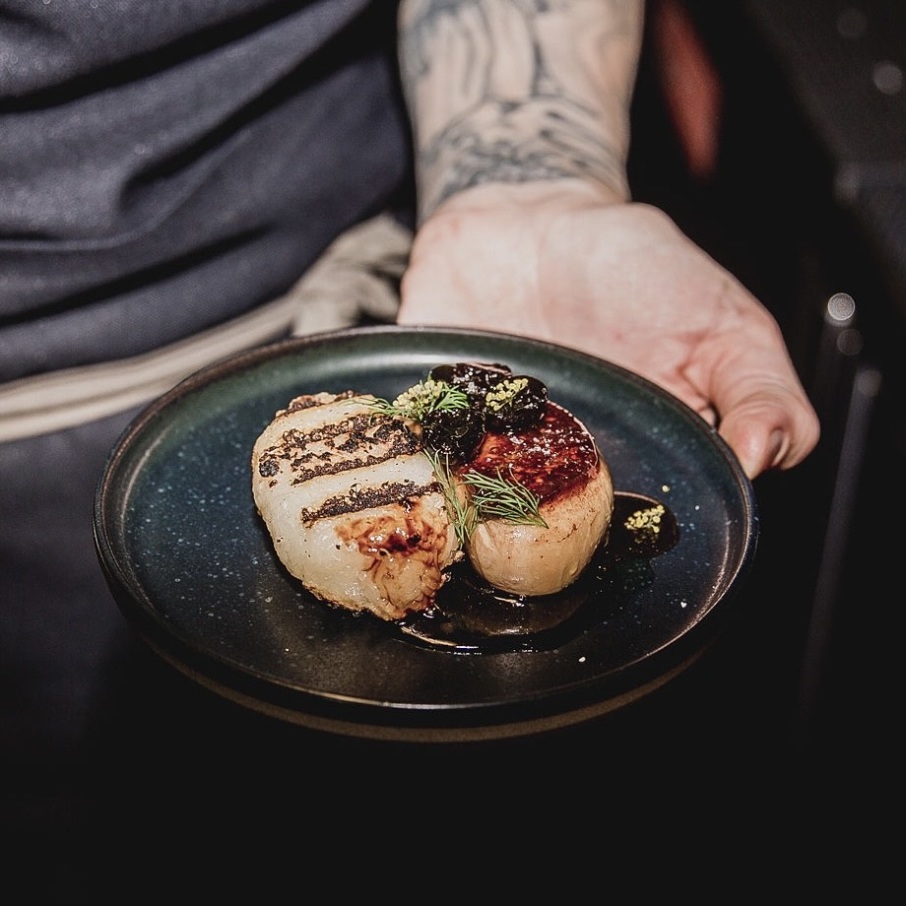
4. Bay Scallop Noodle Soup
“The Bay Scallop Noodle Soup is inspired by a Viet-Cambodian noodle soup called ‘hu tieu.’ Traditionally, it’s rice or wheat noodles, with minced or sliced pork, poached shrimp, and hard-boiled quail egg. The broth is traditionally made with pork bones and dried squid, soaked in water then grilled — they get a nice char on them, which adds a layer of umami unlike anything else I’ve ever experienced.
I was thinking a lot about how people love bacon-wrapped scallops. How do I turn that into a cool soup? So to make the broth, I’m using different-sized cuts of really awesome North Country smoked bacon ends, plus a little daikon radish, ginger, onion, and salted grilled squid. The soup has elements of pork in it, but you don’t smell the broth and think of bacon right away. Because bay scallops are so delicate and light and sweet, I didn’t want to overpower them with a super-rich seafood broth.
We actually use fresh pho noodles in the dish because they’re more readily available, and similar to a hu tieu noodle. This was approved by Aunty Hanh, [a cook] who has worked with us for years, even when Nightshade was a pop-up. I met her when I was a chef-consultant at Soall Bistro [now Soall Viet Kitchen] in Marblehead. If Aunty says, ‘This is what I use in my house,’ I’m like, ‘Well, this is what I use in my house too.’”
5. Lacquered Foie Gras
“I knew I wanted to serve foie gras, because I can’t get enough of it! It’s so delicious and impactful on a menu. This dish is a mash-up of traditional Vietnamese clay pot and how we served foie gras at Clio.
One of the most addictive dishes from my time at Soall Bistro, when I was working with [owners Sa Nguyen and Mia Lunt], was their clay pot chicken and clay pot salmon. So that’s what inspired this mostly. I also thought about the way that Ken liked to serve foie gras with sweeter things and glazes, and some element of fruit. So I make the traditional clay pot sauce — like a sweet, thick soy sauce — and mount it with cherry syrup and Amarena cherries. That gives it a different texture and sheen, and an ability to caramelize very fast. We sear the foie, deglaze with the sauce — make it super-sticky, caramelized and bubbling — and pour it over, serving it with a piece of coconut grilled sticky rice. It’s on almost every single tasting menu now. It’s definitely one of the dishes of my career. I’m really proud of it.”
Bonus: Amaro is the vibrant finale to Nightshade’s fare.
Alexandra Caruso, Nightshade’s general manager and beverage director, talks about the restaurant’s robust — and growing — selection of amari:
“Traditionally, amaro is associated with traditional Italian drinking culture — it’s the Italian word for ‘bitter.’ These are super-varied liqueurs, made from roots and flowers and barks, and are typically representative of the region they come from. We have 45 right now, and we’re really only limited by shelf space — I’d like to double the collection this year.
I was thinking about one — Bonal Gentiane-Quina, a French ‘amer’ from the Grande Chartreuse Mountains — that feels particularly in tune with the Nightshade menu. It’s an apéritif, known as an appetite opener. It’s caramel-colored, and really earthy, mildly sweet, and has this lovely earthy funkiness that pairs particularly well with Vietnamese flavors. It’s really great with fish sauce and nuoc cham and picks up green notes in vegetable dishes. Rachel was talking about the presence of charcoal grilling in Vietnamese cuisine, and its earthy sweetness connects in a really lovely way with that element — delicious with a little chill, or in a spritz.
A lot of people have just had Fernet-Branca or Cynar, and say, ‘I don’t like bitter things.’ But I say, ‘I bet we can find something for you.’ [Amari] are very complex spirits that really pair well with Nightshade’s food, being as complex as it is. There are many more opportunities for connection with the various flavors and textures than in the conventional wine pairing conversation — this expands it.”
Ellen Bhang is a Boston-based food and wine writer whose work appears regularly in The Boston Globe and The Food Lens. Follow her on Instagram. Follow Resy, too.


